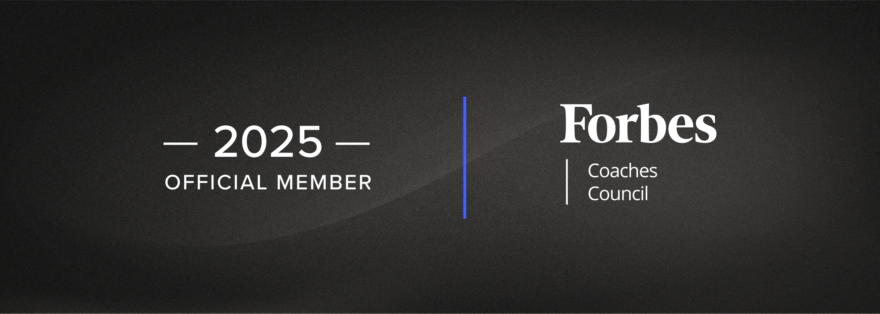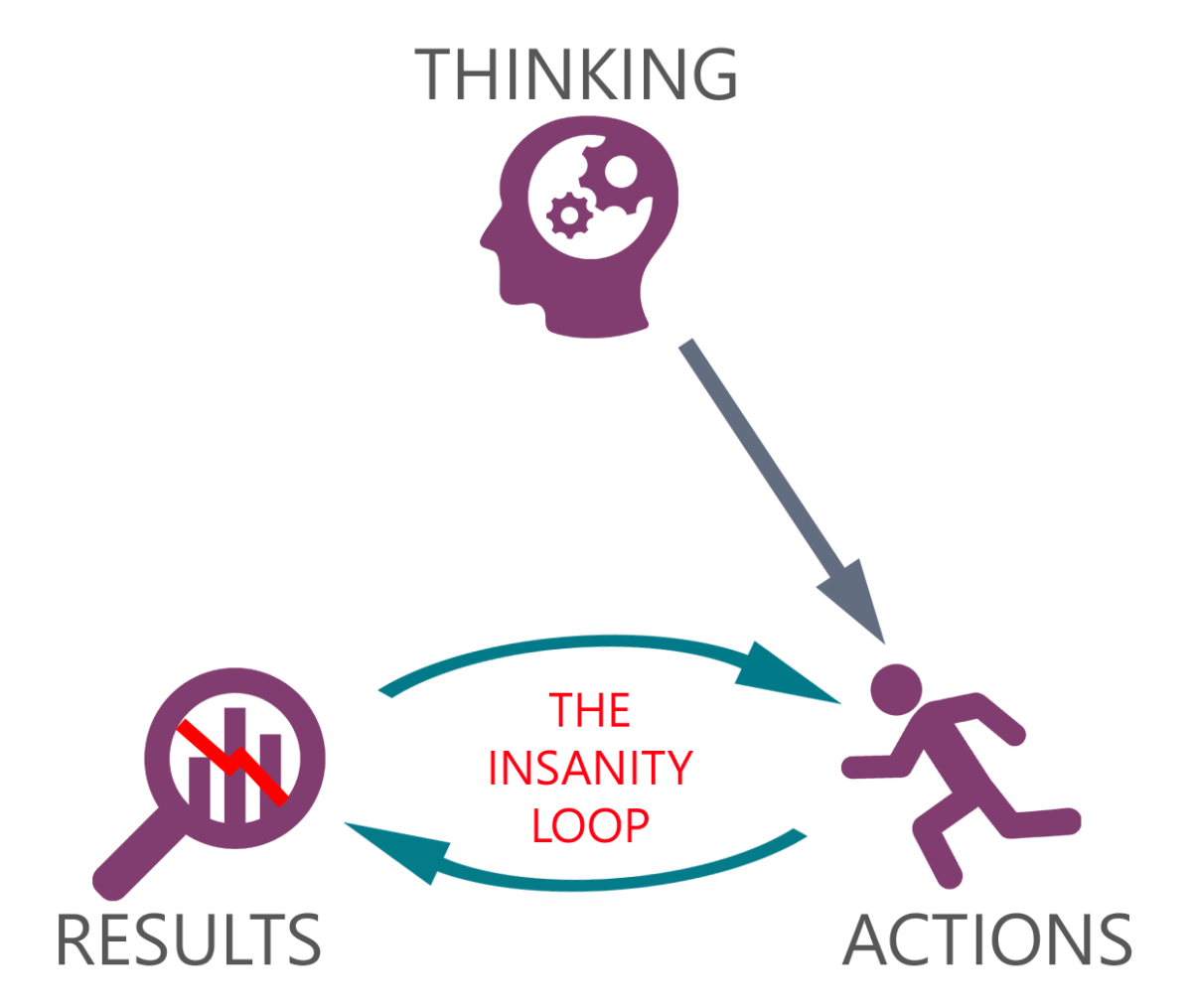In this podcast, Paul and Richard tackle one of the questions we have been asked a lot since the pandemic ended – How do you build trust between team members and teams that don’t spend that much time in the office.
Building trust between individuals and groups is far more complex than many of us realise because we do it so easily when we are together. We build trusting relationships through the micro-moments we spend together: before meetings, over lunch, getting coffee and in quick informal interactions. We also build trust through working together. It is the combination of both these types of trust that forms the relationships that we need to work together.
As leaders, we must change how our teams interact to ensure that the trust we need to achieve our goals is actively built so our teams can leverage trust when things get tough.
How to achieve success in 2025
How to achieve success in 2025 – 5 Top Tips.
In this video, Ricky shares five areas guaranteed to set you up for success. They provide a set of checks and balances that will inform you if you are on course or off course and enable you to course correct as you go.
You can also download our business challenge toolkit, which provides a host of templates, how-to videos, and a proven formula for success.
Download it here: Business Challenge eKit.
Building Trust In Teams: Insights From Leadership Experience
Over decades of leading large teams and coaching executives in renowned companies, I’ve learned that trust isn’t just a component of effective leadership—it’s its very foundation. Without trust, strategies falter, innovation stalls and organizations come to a standstill. Today, I want to explore how to build trust within teams from both a leader’s and a team member’s perspective, providing practical insights rooted in real-world experience to help you enhance trust in your own teams.

The Necessity Of Trust In Leadership
Trust acts as a stabilising force in large corporate environments where complexity and change are constants. It’s the invisible thread woven through every interaction and decision, accelerating progress and uniting teams toward shared goals. The impact of trust isn’t theoretical; it’s tangible and profoundly influences organizational success.
Frances Frei’s Trust Triangle
Harvard Business School professor Frances Frei offers a compelling framework called the Trust Triangle, consisting of three critical elements:
Authenticity: Being true to yourself. People can detect inauthenticity instantly; it’s essential to be genuine.
Logic: Having clear and sound reasoning. Your logic should be solid, and you must articulate it effectively.
Empathy: Understanding and sharing others’ feelings. Showing genuine concern for others is crucial in building trust.
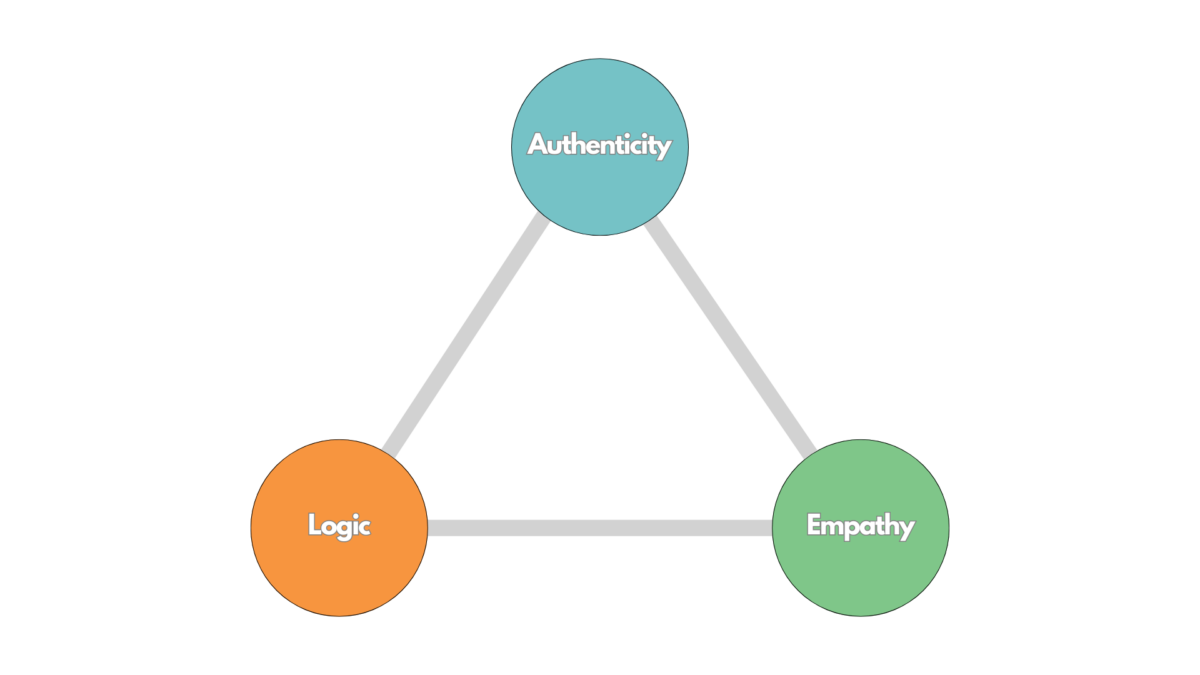
These elements interconnect to form two essential types of trust in leadership: cognitive trust and affective trust.
Cognitive Trust: Trust Of The Head
Cognitive trust is the trust of the mind arising from belief in a leader’s competence and reliability. It thrives when team members perceive their leader as authentic and logically sound.
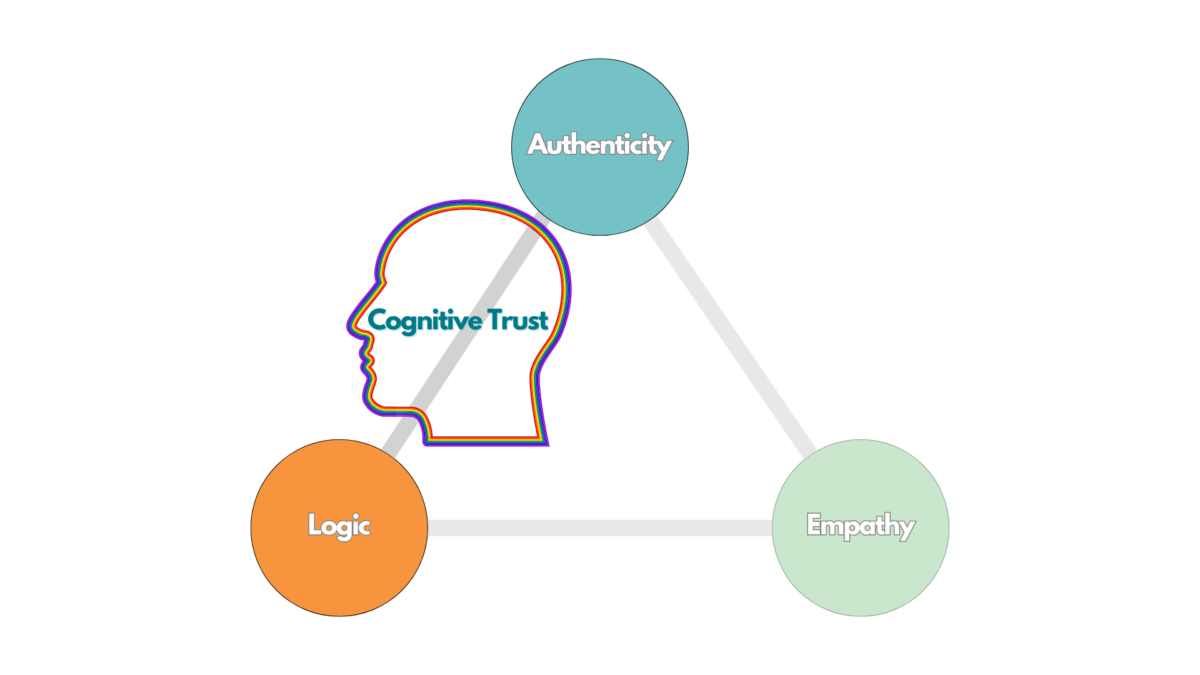
From The Leader’s Perspective
Demonstrate consistency. Align your actions with your words. Inconsistencies quickly erode trust.
Communicate the ‘why.’ Provide context for decisions to empower your team with understanding, not just directives.
Be transparent about challenges. Authenticity includes acknowledging obstacles and sharing your approach to overcoming them.
From The Team Member’s Perspective
Seek clarity. Don’t hesitate to ask questions if something is unclear; this strengthens collective understanding.
Acknowledge expertise. Recognize your leader’s experience, fostering mutual respect and reinforcing cognitive trust.
Affective Trust: Trust Of The Heart
Affective trust is the trust of the heart, cultivated when leaders authentically connect on an emotional level and demonstrate genuine empathy.
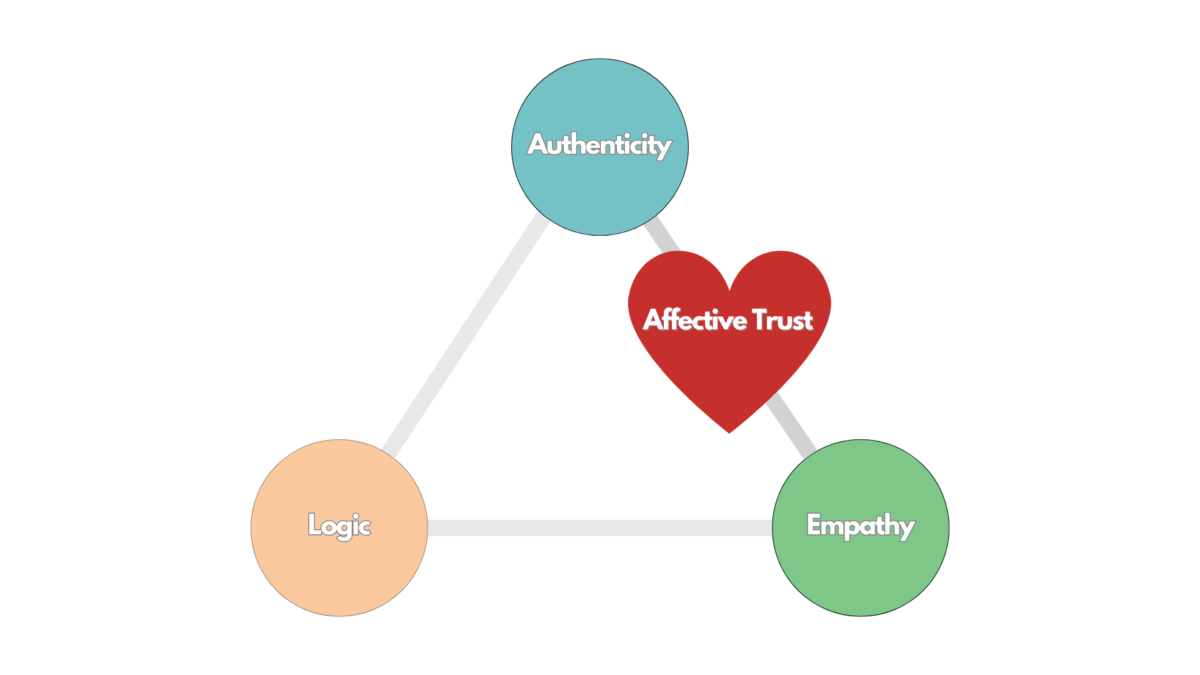
From The Leader’s Perspective
Invest in relationships. Take time to understand your team members’ aspirations, fears and motivations.
Show vulnerability. Sharing your challenges and failures humanizes you and creates a safe space for others.
Listen to understand. Focus on truly understanding your team members’ feelings and perspectives.
From The Team Member’s Perspective
Engage openly. Share your perspectives and challenges; building trust is a collaborative effort.
Support peers. Show empathy toward colleagues, strengthening team cohesion and supporting a trusting culture.
Practical Strategies For Leaders To Enhance Trust
- Conduct trust audits. Regularly assess trust levels within your team, seeking honest feedback.
- Lead with integrity. Uphold ethical standards consistently, even when faced with dilemmas.
- Empower decision-making. Delegate authority, showing confidence in your team’s abilities.
- Celebrate wins and learn from losses. Recognise achievements and approach failures as learning opportunities.
Empowering Teams To Build Trust Among Themselves
- Foster collaboration. Encourage cross-functional teamwork to build trust naturally.
- Encourage peer recognition. Implement systems for team members to acknowledge each other’s contributions.
- Promote transparency. Facilitate open communication channels across the team to reduce misunderstandings.
Navigating Trust Erosion
Despite best efforts, trust can sometimes erode due to factors like organizational changes or external pressures.
For Leaders
Address issues directly. Confront trust
issues with honesty and a commitment to resolve them.
Rebuild through actions. Restore trust through consistent, trustworthy actions |
over time.
For Team Members
Provide constructive feedback. Express concerns respectfully; leaders can’t address unknown issues.
Stay committed. Continue performing at your best, contributing positively to the trust environment.
The Synergy Of Cognitive And Affective Trust
Authenticity links cognitive and affective trust. By aligning your genuine self with logical reasoning and empathetic understanding, you create a powerful trust dynamic that resonates both intellectually and emotionally with your team.
Case Study: Trust In Action

I once led a global team through significant organizational change. Initial trust was low due to past leadership missteps. I addressed this by:
Being Transparent: Sharing challenges and the strategic plan openly (Authenticity + Logic).
Engaging Personally: Holding one-on-one meetings to understand individual concerns (Authenticity + Empathy).
Collaborating On Solutions: Incorporating team feedback into implementation plans.
Over time, we not only navigated the change but emerged stronger and more cohesive, demonstrating the impact of building both cognitive and affective trust through authentic actions.
Conclusion: Trust As The Catalyst For Excellence
In the vast corridors of large corporations, trust humanizes the workplace. It’s the catalyst that transforms strategies into successes and groups into unified teams. As leaders, embodying authenticity, logic, and empathy is imperative.
Action Steps
Reflect on your trust triangle. Identify which element—authenticity, logic or empathy—you need to strengthen and develop a plan to enhance it.
Engage your team. Initiate dialogue about trust, encouraging open sharing and collective growth.
Lead by example. Your actions set the tone and embody the trust you wish to see.
Final Thoughts
Building trust requires consistent, intentional actions and a willingness to grow alongside your team. From my experience, the dividends of trust—in engagement, innovation and performance—are well worth the investment.
By focusing on both cognitive and affective trust and recognizing authenticity’s pivotal role in bridging logic and empathy, you position yourself and your team to exceed objectives, turning challenges into opportunities for greatness.
Embrace the journey of building trust. Your leadership will inspire your team and leave a lasting impact on your organization’s culture.
This article first appeared on Forbes.com on 3rd January 2025
Ricky has been a regular contributor to the Forbes Councils since 2023, where he shares his perspectives on all things leadership, change, culture and productivity, all with Thinking Focus’ unique perspective on metacognition, or as we prefer to say, thinking about thinking.
Mindset Shift: The Key to Driving Performance and Empowering Teams
- Are you or your team stuck in a problem-solving rut?
- Ready to turn roadblocks into breakthroughs?
Watch our webinar, where we revealed how a simple mindset shift could transform even the toughest challenges into powerful opportunities, as featured on Forbes.com.
In just 45 minutes, you will discover proven techniques for reframing your rumination and self-limiting beliefs, unleashing creativity, and driving your and your team’s results.
This recording is your chance to learn how to think differently and achieve your next big breakthrough!
Checkout the free resources too:
Mindset Toolkit:
https://thinkingfocus.aflip.in/ToolsforMindsetShift
Webinar Slides:
Mindset Shift: The Key to Driving Performance and Empowering Teams
This webinar explored how to get unstuck; this toolkit accompanies the webinar and provides a practical three-step process that any individual or team can use to turn unhelpful rumination, or as we call it, problem-focused thinking, into solution-focused thinking. By clearing away the limiting beliefs and assumptions holding you back, you can make giant leaps forward and deliver the success you desire. Look out for a couple of bonus tools, too!
Unstuck: How You Can Reframe Your Mindset For Breakthrough Performance
Imagine spearheading a groundbreaking project, only to find yourself facing a massive roadblock: there’s no market for your product. For many leaders, the instinct is to salvage what already exists, but this often leads to cognitive tunnelling—a trap where focus narrows, creativity fades, and progress halts. This article dives into a real-world example where shifting the mindset from salvaging to reframing turned a seemingly doomed idea into an industry-changing solution.
Packed with practical exercises, this piece equips leaders with mindset-shifting tools to unlock breakthrough results by broadening perspectives. If you’re ready to see how a small shift in thinking can redefine the success of your toughest challenges, this article provides a proven roadmap. Whether you’re navigating market constraints, tight budgets, or innovation fatigue, the key to overcoming obstacles isn’t simply in doing more but in thinking differently.

Imagine you’re leading a high-profile project sponsored by the board of directors—a career-defining opportunity. You’re expected to turn a novel idea into a significant revenue stream for the business. But there’s a catch: You realise that the product you’re working on doesn’t have a market. What do you do?
This scenario may sound familiar to many leaders. You’re tasked with making the impossible possible, and when roadblocks emerge, it’s easy to get trapped in a cycle of overthinking. However, the key to breakthrough performance often lies not in finding a perfect solution but in reframing the problem itself.
The Challenge: When A Great Product Has No Market
We were running a leadership program with a 180-day business challenge built in. This enables leaders to apply their learning in real time to something meaningful. I worked with a team tasked with developing groundbreaking technology for dairy farmers. This technology could instantly measure the nutrient content in, let’s say, a less-than-glamorous material, helping farmers adjust feed mixes to optimise dairy yield.
The product came in two forms: a premium, state-of-the-art version with cutting-edge tech and a more affordable but still costly alternative. But there was a problem: Dairy farmers could already get similar data from feed manufacturers—for free. They’d just have to wait 48 hours for the result. This left the team facing what felt like an insurmountable challenge.
Cognitive Tunneling: The Silent Performance Killer
When the team presented the problem, they were visibly disheartened. Their entire focus was on how to explain to senior leaders that the project had hit a wall. They were caught in what psychologists call cognitive tunnelling—a mental state where you become so fixated on one issue that you can’t see alternatives.
The problem wasn’t just that the product wasn’t viable; it was that the team’s thinking was stuck in a loop of trying to salvage a seemingly doomed idea. This kind of tunnel vision often leads to catastrophising and an inability to see the bigger picture. For leaders, cognitive tunneling is a major barrier to creative problem-solving and breakthrough results.
The Mindset Shift: Redefining The Goal
I encouraged the team to step back and redefine the problem. Instead of fixating on why farmers wouldn’t pay for the technology, we asked: What if there’s a different way to deliver value?
Over the next 45 days, they explored the issue from different perspectives, speaking to people inside and outside the industry. The breakthrough came when they reframed the question: What if farmers didn’t have to buy the technology? What if they could lease it instead?

This small shift opened up an entirely new business model. Farmers could pay a small monthly fee for immediate access to the data, which would help them optimize their feed and boost their dairy yield. The company, in turn, would gather a massive data set from farms across the country, providing invaluable insights for the agricultural sector. What started with a project team being stuck evolved into a business with the potential to transform the industry.
Practical Takeaways: How Leaders Can Get Unstuck
Ask Different Questions
- What else could I possibly do?
- Who else might have faced this problem?
- What might [insert someone inspiring] do if they had this problem? (I use Batman, by the way.)
- If there were no constraints, how might I achieve this?
Break The Insanity Loop
Repeating the same actions and expecting different results is a common trap. Instead, recognise when your thinking is stuck in a loop and consciously shift to a different approach. This mindset shift can open doors you didn’t realise were there.

Use The Post-It Exercise
Here’s a simple technique to break free from limiting thoughts. Write down all your thoughts about the problem—both helpful and unhelpful—on separate Post-It notes. Then:
- Sort them into what’s in your control and what’s not.
- Discard anything outside your control (literally throw those notes away).
- Focus only on what’s within your control and categorise these thoughts into those moving you forward and those holding you back.
Get Creative
Once you’ve sorted your thoughts, focus on those holding you back and ask yourself:
- What have I done before that could help me now?
- What could help me most right now?
- What could be the most helpful thing to focus on?
- What could I learn from this situation?
- How could I make this work for me right now?
- What might be the best, most realistic outcome I can imagine?
The Power Of Reframing
The team I worked with didn’t just solve a problem—they transformed the business. By reframing their approach and asking different questions, they unlocked value that wasn’t visible at first. The same can happen to you. When faced with seemingly insurmountable challenges, it’s not about having all the answers but about asking the right questions.
Remember, what got you here won’t get you there. The key to breakthrough performance isn’t more tools or data—it’s thinking differently. You can drive the desired results by stepping back, getting creative and reframing the problem.
This article first appeared on Forbes.com on 1st November 2024
Ricky has been a regular contributor to the Forbes Councils since 2023, where he shares his perspectives on all things leadership, change, culture and productivity, all with Thinking Focus’ unique perspective on metacognition, or as we prefer to say, thinking about thinking.
Unlock the Secrets to Effective Leadership
- Are you a leader seeking clarity and effectiveness in today’s ever-evolving landscape?
- Do you find yourself overwhelmed by the mounting expectations and complexities of leadership?
- Despite your hard work, do you sometimes feel like you’re not making the impact you’d hoped for?
If so, watch our webinar, which will empower leaders like you.
Why watch?
In a world where leadership is more diverse and remote than ever, navigating the commercial landscape filled with volatility, uncertainty, complexity, and ambiguity (VUCA) is challenging. The modern leader is not only expected to lead but also to adapt and execute effectively amidst rapid changes and information overload.
Join us for this insightful session where we will explore:
- Purpose: Learn to engage your team with a compelling “why” that drives motivation and alignment.
- People: Discover strategies to build and nurture a high-performing team that thrives in any environment.
- Productivity: Master the art of executing plans and delivering results through others, even in the face of uncertainty.
What You’ll Gain:
- Practical insights into the evolving role of leadership.
- Tools and strategies to enhance your effectiveness and productivity.
- Clarity on how to lead with purpose and build a cohesive team.
Is it for me?
This webinar is perfect for current and aspiring leaders eager to enhance their leadership skills and navigate the complexities of today’s business world. Take advantage of this opportunity to redefine your leadership approach and gain valuable insights from experts who have worked with leaders worldwide.
The Untapped Power of Collaboration
Despite its potential to significantly enhance growth and efficiency, many organisations struggle to make cross-functional collaboration work. The obstacles—ranging from competing agendas and egos to miscommunication and untested assumptions—can derail even the best intentions. However, by prioritizing stakeholder engagement early, fostering diverse perspectives, and addressing challenges proactively, organizations can unlock substantial improvements in performance. This executive summary highlights the critical importance of collaboration, offering actionable strategies to navigate common challenges and achieve greater cohesion and productivity.
Improving cross-functional relationships and collaboration arguably represents one of the most significant organisational growth and improvement opportunities – why, then, are organisations not addressing this?

Perhaps it’s not so surprising when you consider the layers of competing agendas, egos and infighting, conflict, misinformation, and backchannelling. Added to that, there are the self-imposed elements of assumptions, personal limitations, and poorly articulated business cases that, despite having merit, never see the light of day.
I remember my first major change programme, where an entire team was ignored because we didn’t think the change would affect them. We overlooked their wants and needs for this significant change. We assumed they’d be fine and would get on with it. The decision was a mistake; the Department Head used their influence to block the change for their team. The project team had to regroup and rethink. This delayed the project, and chunks of the scope had to be removed to hit the delivery date.

Over the years, we have built and delivered countless leadership programmes for organisations across the globe. We include a business challenge to help with the application of learning, exposure to the wider business, and delivery of value back to the business. I love working with leaders, yet it astounds me that they never seem to grasp the importance of engaging stakeholders. We even share the experiences of previous groups’ successes and failures. Yet despite these warnings, they still trip over the same things as those that have gone before.
Business Challenge in Action
We see it constantly; take a recent business challenge we ran. One project group identified a business-wide project that could transform employee engagement. They formulated compelling business benefits: increasing productivity, boosting employee retention, and promoting the brand in local communities.
The group got their plan together and ran it by their mentor; they were all set and approached a large department representing a third of the workforce. Having them on board would make a wider rollout easier. When they presented their ideas to the Head of Department, they assumed their excitement would be shared, but they hit a brick wall. The Head of Department highlighted obstacle after obstacle, insisting they go away and fix it. The group were understandably disheartened.
In the learning review, we explored what they could have done differently. How might they have engaged the stakeholders differently, gaining the department’s perspective? What assumptions did they make? How might they have felt had the boot been on the other foot?
This experience is a microcosm of how organisations do business every single day, and there is immense learning on offer. Failing to collaborate and engage stakeholders causes unnecessary delays, missed milestones, wasted time, effort, and resources.
We are all guilty of making assumptions, from whether someone will get involved or not to whether someone has the time, knowledge or skills, or not to be able to help. We may not even like them or want their help, even though this may be us cutting our noses off to spite our faces. Our egos can get in the way.
We avoid ‘difficult’ personalities; we circumvent them or bury our heads in the sand, hoping they won’t be an issue. But inevitably, they are, and this creates roadblocks and wasted time. If someone ignores your needs or fails to engage you, you will feel like making things difficult.

Learning from Experience
No one likes changes imposed on them; we want to be involved, to feel that you have listened, heard and understood our perspective. Involving me in change in this way helps to gain my buy-in and increases your chances of success. The ‘people factor’ is a major cause of change programmes failing to achieve their intended outcomes. So, what’s the answer?
When the business challenge group reflected, they quickly realised they should have engaged and involved their stakeholders earlier, making buy-in easier. They recognised their excitement for their project, but it was not matched by the department head because they had their own issues and priorities to focus on. They weren’t excited; instead, they felt ambushed. Involving them earlier would have helped them feel the time had been taken to understand their department’s challenges, and they might have offered solutions. They may still have resisted, but the plan could have been adapted much earlier. Instead, they lost time, had to replan, and took longer to realise the project’s benefits.
Consider my experience of large-scale projects. If we had not cut corners, we could have explained what was happening, understood stakeholder needs and engaged others in making it work. This would also have avoided us delivering a substandard result.
In my experience, not engaging stakeholders well or, worse, ignoring them will catch you out when you least expect it. It’s far better to be proactive; you may as well spend more time getting them on board early rather than trying to recover later.
There are no shortcuts to involving people, so why not do it early and confront the issues up front? This way, you can engage with them on the solution and find ways to modify your approach for mutual success.
For many businesses, the ability to collaborate and execute effectively is underwhelming at best, and yet they still get results! Imagine if they got their act together and collaborated better—they’d be unstoppable!

My key learnings over the years are:
- Explore who could help and who could get in your way.
- Engage stakeholders early, be proactive and build relationships.
- Start every interaction from their perspective – ‘seek first to understand’, as Stephen Covey says.
- Have a plan to influence others and mitigate potential blockers.
- Focus on the ‘why’ when presenting your ideas and goals/ Don’t get hung up on the how; be flexible and bring any conflict back to the ‘why’.
- Don’t do all the work; involve stakeholders in solving problems; they probably have a better view.
- Test, test and test assumptions, beliefs and biases.
- Be aware of your self-talk; your mindset, if not managed, will trip you up.
This article first appeared on Forbes.com on 5th September 2024
Ricky has been a regular contributor to the Forbes Councils since 2023, where he shares his perspectives on all things leadership, change, culture and productivity, all with Thinking Focus’ unique perspective on metacognition, or as we prefer to say, thinking about thinking.
Unlocking Leadership Potential: A Blueprint for Transformative Growth
As a leader of large teams and departments, you will know that leadership isn’t just about hitting targets and managing people. It’s about unlocking the potential within your teams and, just as importantly, within yourself. In an environment where the only constant is change, how you lead makes all the difference between just surviving and truly thriving. That’s why I’m excited to share our Leadership Blueprint—a powerful tool designed to help leaders like you break through the barriers that often hold you back and drive real, meaningful change.
Why the Leadership Blueprint Matters
In my experience working with organisations across various sectors, I’ve seen firsthand how easy it is for leaders to get caught up in day-to-day operations, often at the expense of strategic growth and personal development. The pressures of managing large teams and hitting KPIs can sometimes overshadow the importance of continuous leadership evolution. But the truth is, if you’re not growing, you’re stagnating—and so are your teams.
Our Leadership Blueprint addresses this head-on. It’s not just another leadership guide. It’s a strategic tool designed to help leaders navigate the complexities of modern business while fostering an environment where individuals and teams can excel.
What Sets Our Blueprint Apart
- 1. Mindset First: You will have encountered those moments when your own thinking becomes the bottleneck. Our Blueprint emphasises the importance of mindset as the foundation of effective leadership. It offers practical ways to shift our perspectives, challenging the self-limiting beliefs that can hold us—and our teams—back.
- 2. Actionable Change: While changing your mindset is critical, it’s equally important to translate those shifts into tangible actions. The Blueprint provides step-by-step guidance on how to embed these new ways of thinking into your daily leadership practice, ensuring that the impact is not just theoretical but real and lasting.
- 3. Alignment with Organisational Goals: Leadership is more than personal development; it’s about driving the organisation forward. Our Blueprint ensures that as you evolve as a leader, your growth is aligned with your organisation’s broader strategic objectives, creating a ripple effect that benefits everyone.
What You’ll Gain from the Leadership Blueprint
The Leadership Blueprint is for leaders like you— who oversee large teams and departments tasked with managing, inspiring, and driving transformation. Here’s what you can expect:
Self-Assessment Tools: Understand your current leadership strengths and areas for development with actionable insights focused on areas where you can grow.
Tailored Action Plans: Develop a personalised roadmap that aligns with your leadership aspirations and your organisation’s goals.
Insightful Case Studies: Learn from peers who have successfully implemented these strategies in real-world scenarios.
Continued Support: Access resources that keep you on track, ensuring your leadership journey is ongoing and adaptive to new challenges.
The Path Forward
Leadership is about more than maintaining the status quo, especially at the helm of large teams and departments. It’s about driving significant, positive change. Our Leadership Blueprint will support you, providing the tools and insights necessary to elevate your leadership game and, by extension, the performance of your entire team.
I encourage you to download the Leadership Blueprint today and discover how to unlock your leadership’s full potential.
This leadership blueprint is a powerful tool designed to help experienced leaders, those new to the role, and those aspiring to join the leadership ranks. It will help you break through the barriers that often hold you back and drive real, meaningful change. As a leader, you will know that leadership isn’t just about hitting targets and managing people. It’s about unlocking the potential within your teams and, just as importantly, within yourself. In an environment where the only constant is change, how you lead makes all the difference between just surviving and truly thriving.
A Blueprint for Leaders and Leadership
This Leadership Blueprint is a powerful tool designed to help experienced leaders, those new to the role, and those aspiring to join the leadership ranks. It will help you break through the barriers that often hold you back and drive real, meaningful change.
As a leader, you will know that leadership isn’t just about hitting targets and managing people. It’s about unlocking the potential within your teams and, just as importantly, within yourself. In an environment where the only constant is change, how you lead makes all the difference between just surviving and truly thriving.




